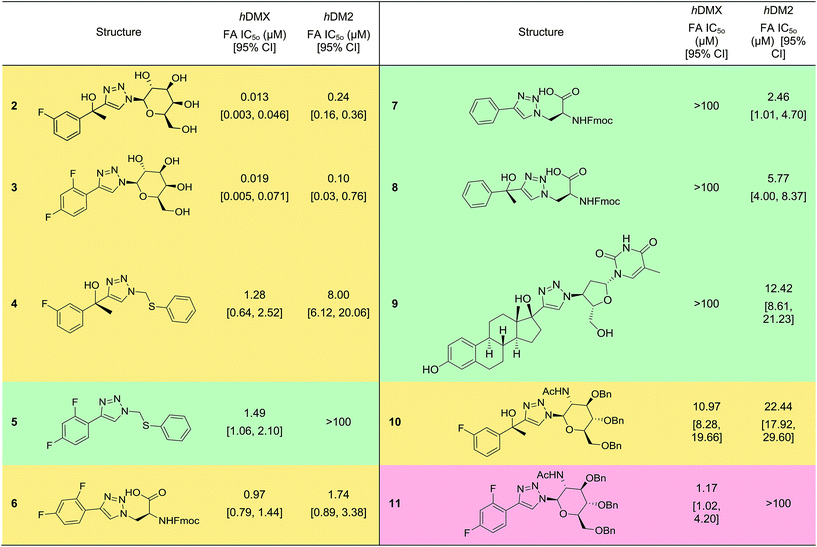 Open Access Article
Open Access ArticleCreative Commons Attribution 3.0 Unported Licence
Correction: Identification of selective protein–protein interaction inhibitors using efficient in silico peptide-directed ligand design†
Andrew M.
Beekman
*a,
Marco M. D.
Cominetti
a,
Samuel J.
Walpole
a,
Saurabh
Prabhu
a,
Maria A.
O’Connell
a,
Jesus
Angulo
a and
Mark
Searcey
*ab
aSchool of Pharmacy, University of East Anglia, Norwich Research Park, Norwich, Norfolk NR47TJ, UK. E-mail: A.Beekman@uea.ac.uk; M.Searcey@uea.ac.uk
bSchool of Chemistry, University of East Anglia, Norwich Research Park, Norwich, Norfolk NR47TJ, UK
First published on 14th May 2019
Abstract
Correction for ‘Identification of selective protein–protein interaction inhibitors using efficient in silico peptide-directed ligand design’ by Andrew M. Beekman et al., Chem. Sci., 2019, DOI: 10.1039/c9sc00059c.
The authors regret that the structures of compounds 2, 3, 10 and 11 are incorrect in the original article. The correct structures are presented in the updated version of Table 1 below.
| a IC50 values determined by non-linear regression of at least three independent experiments (see ESI, pg 10). Errors are 95% confidence intervals (CI). Fmoc, 9-fluorenylmethylcarbonyl. |
|---|

|
The original ESI was replaced by a correspondingly revised version on 1st May 2019 to reflect these changes.
The Royal Society of Chemistry apologises for these errors and any consequent inconvenience to authors and readers.
Footnote |
| † Electronic supplementary information (ESI) available: See DOI: 10.1039/c9sc00059c |
| This journal is © The Royal Society of Chemistry 2019 |
